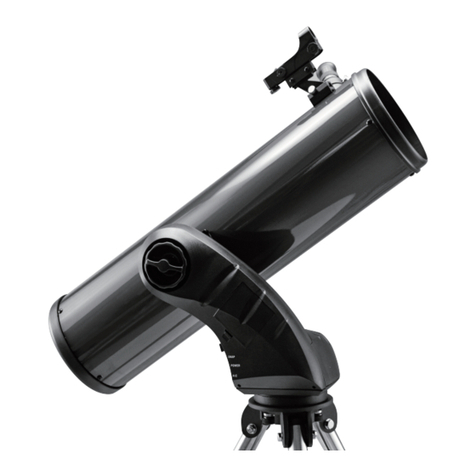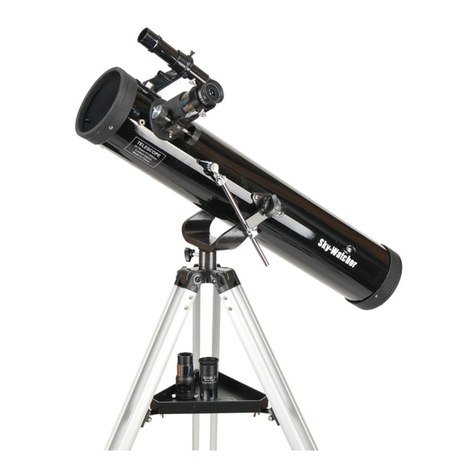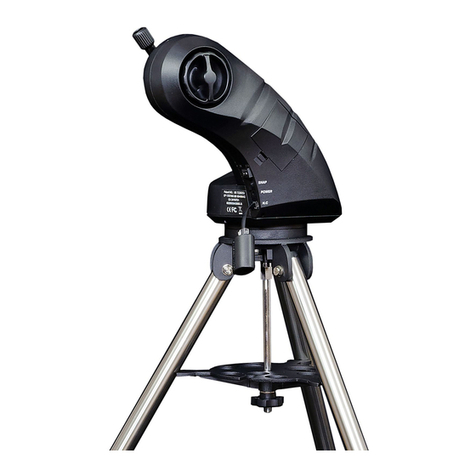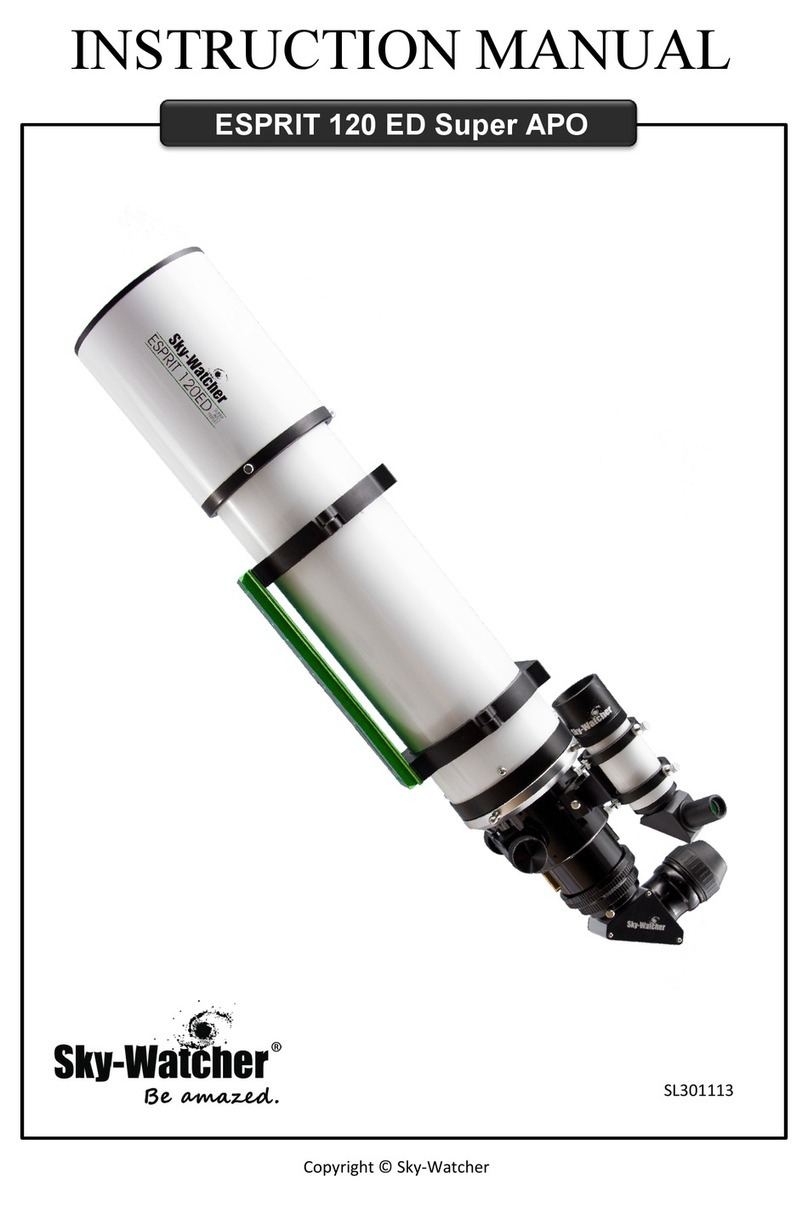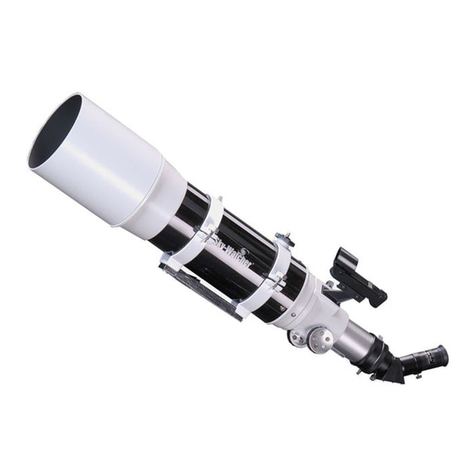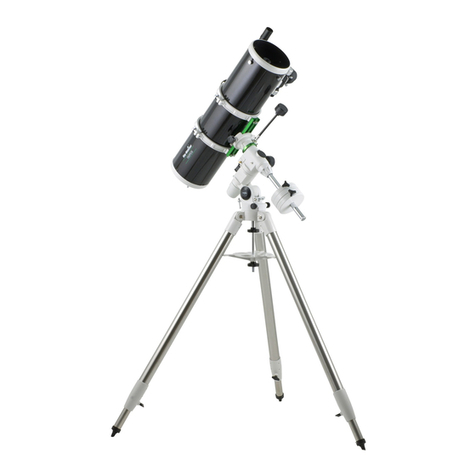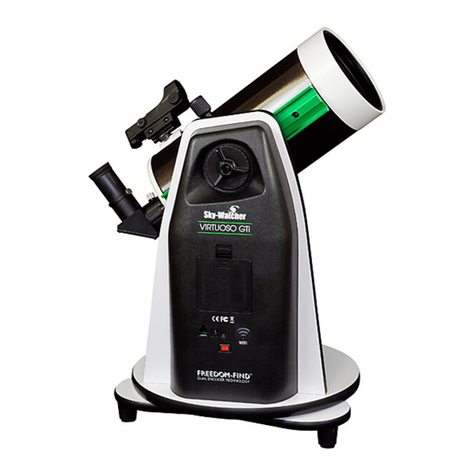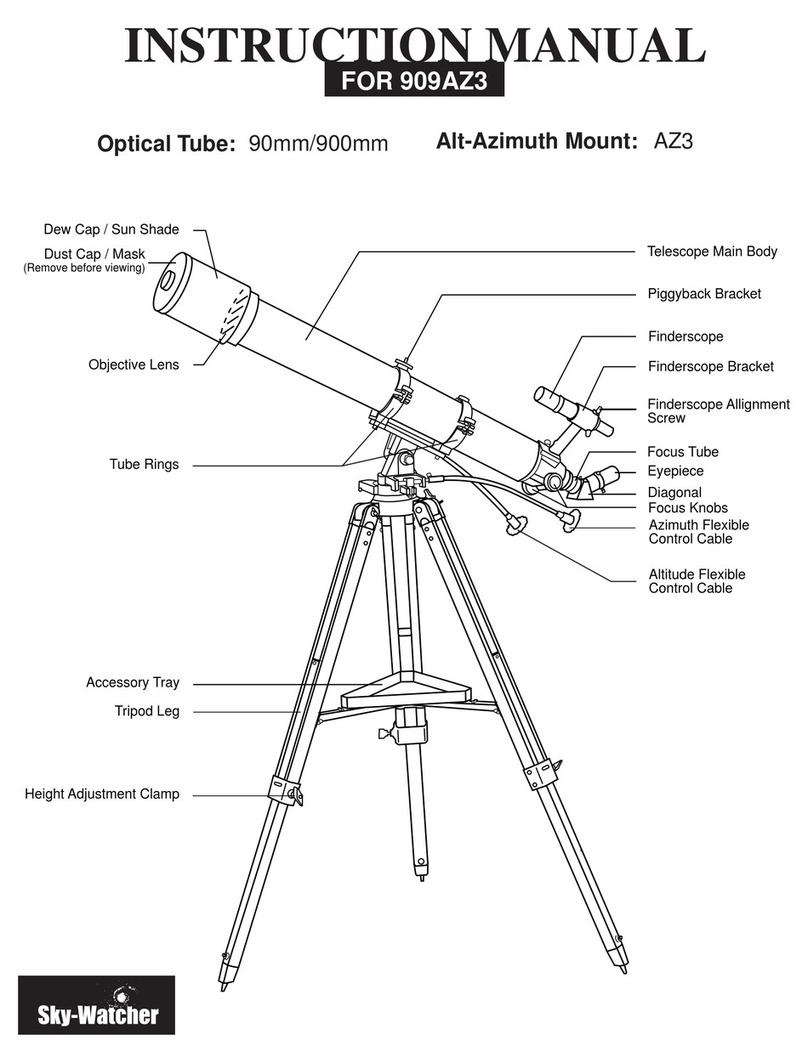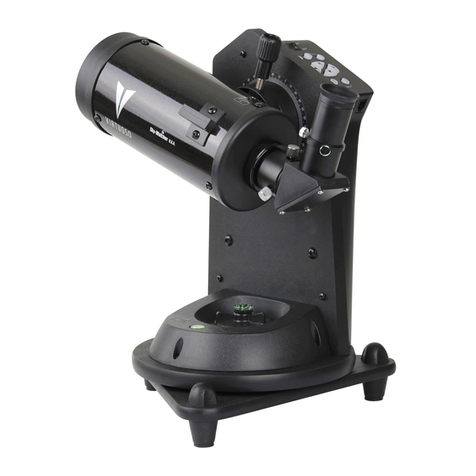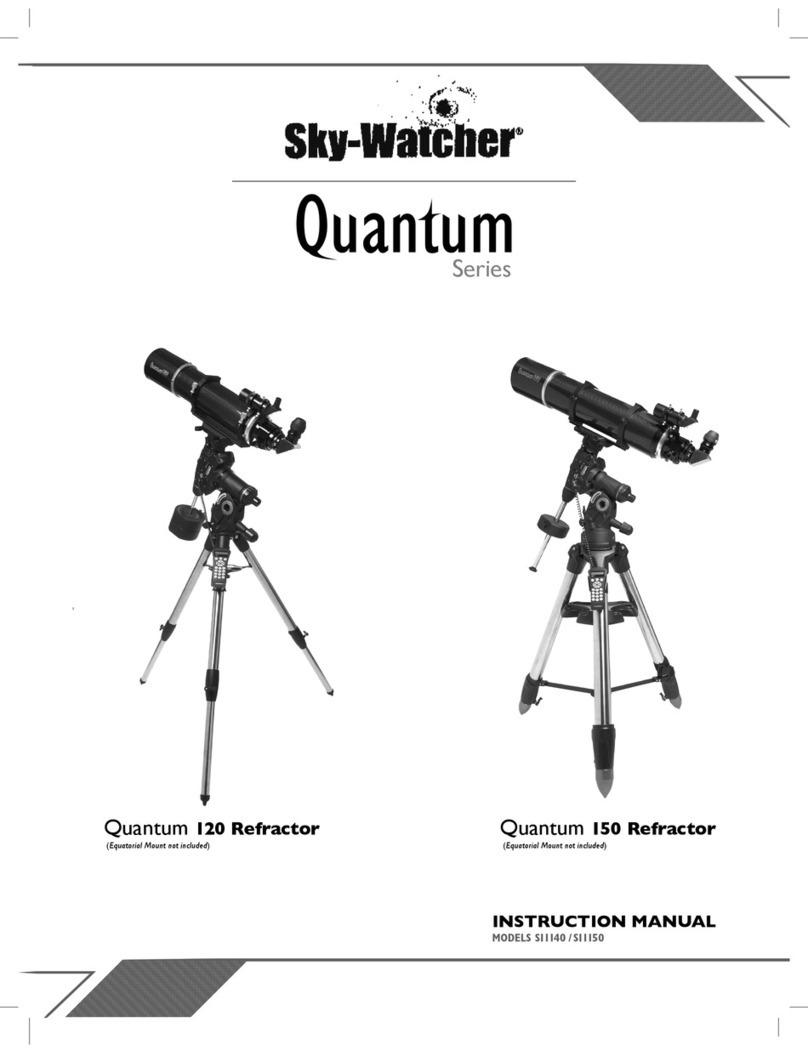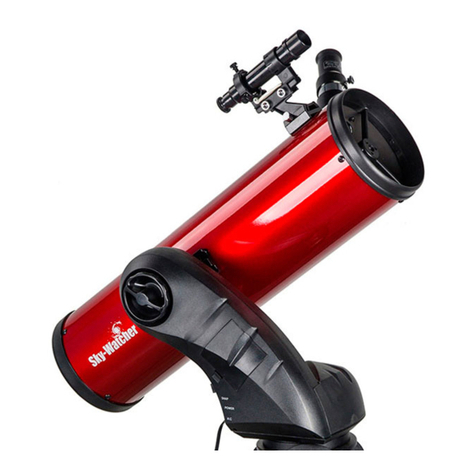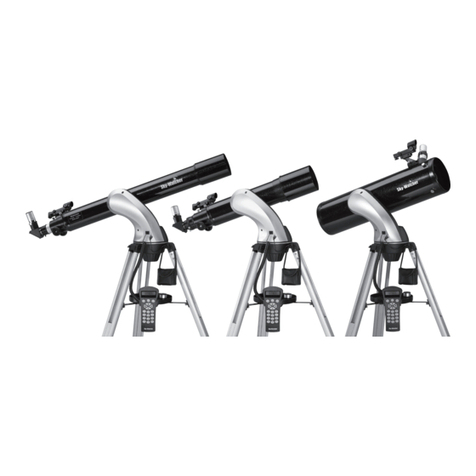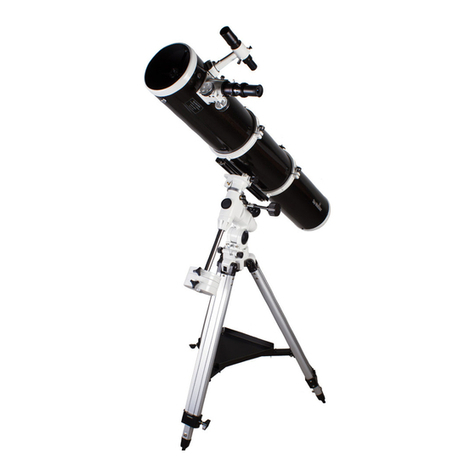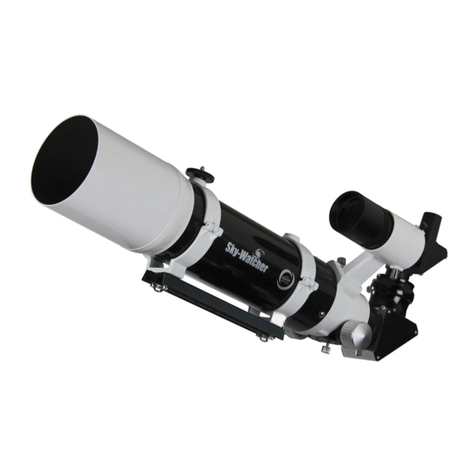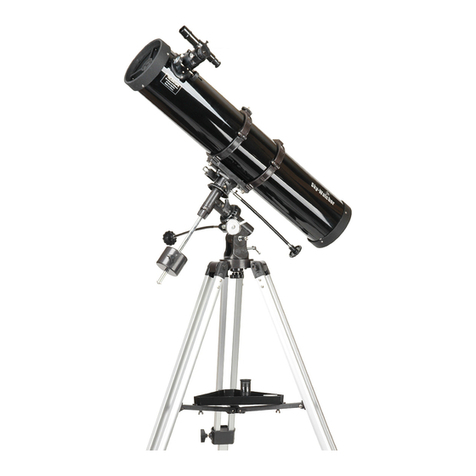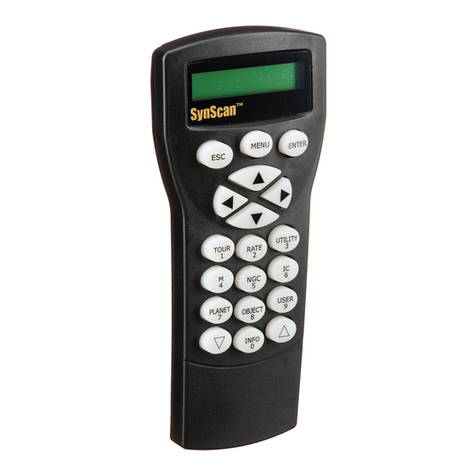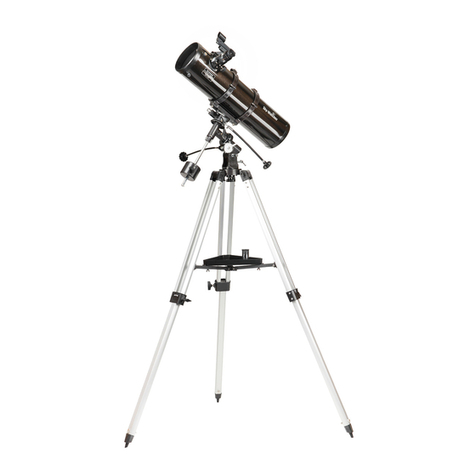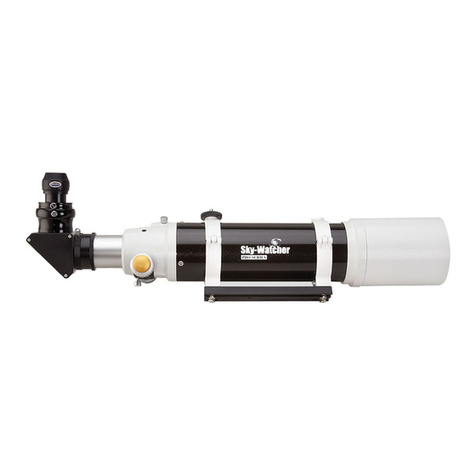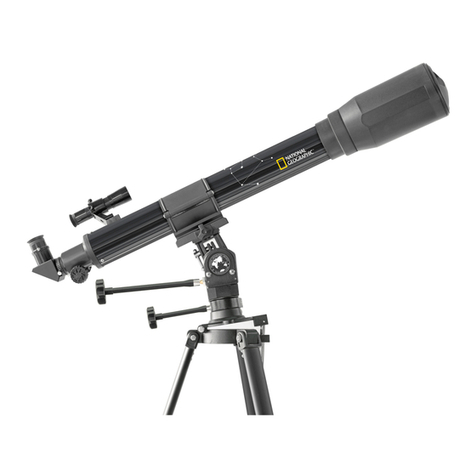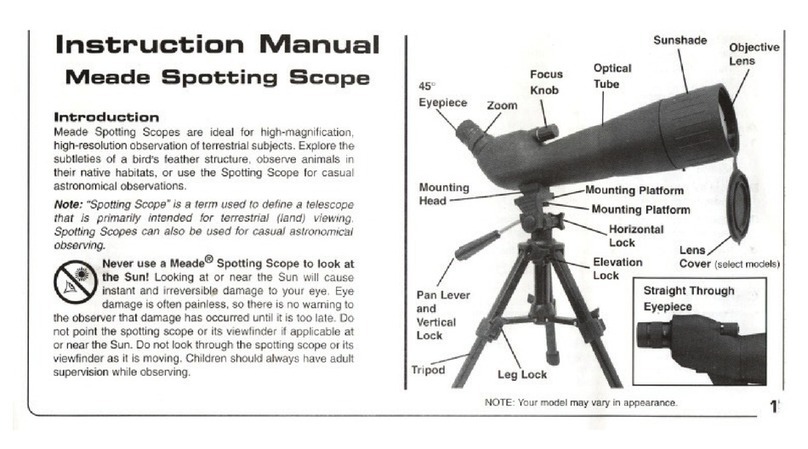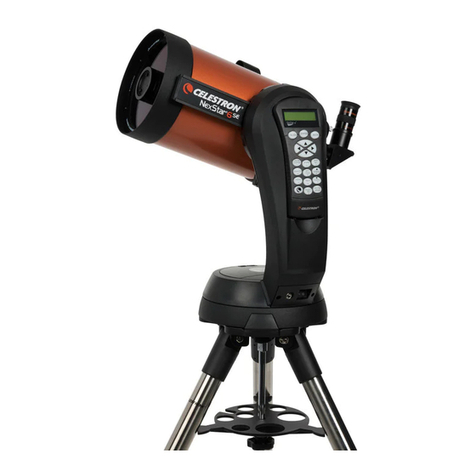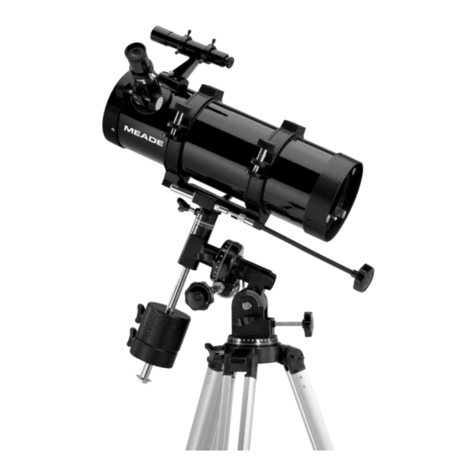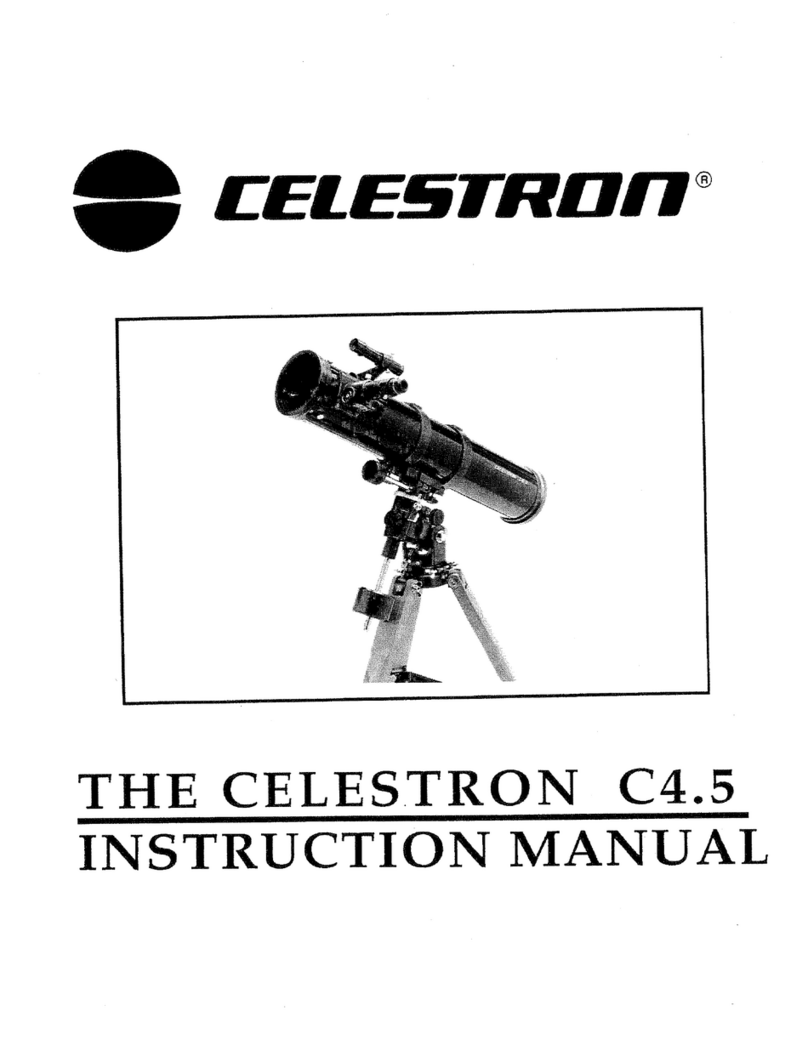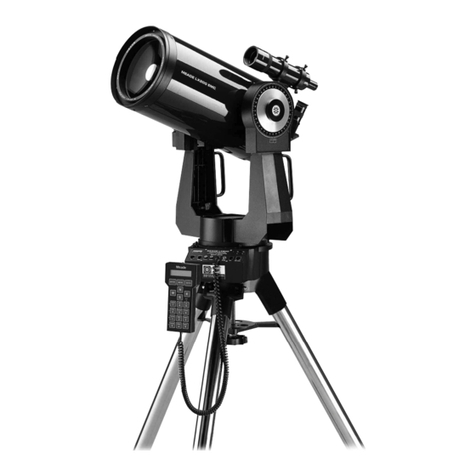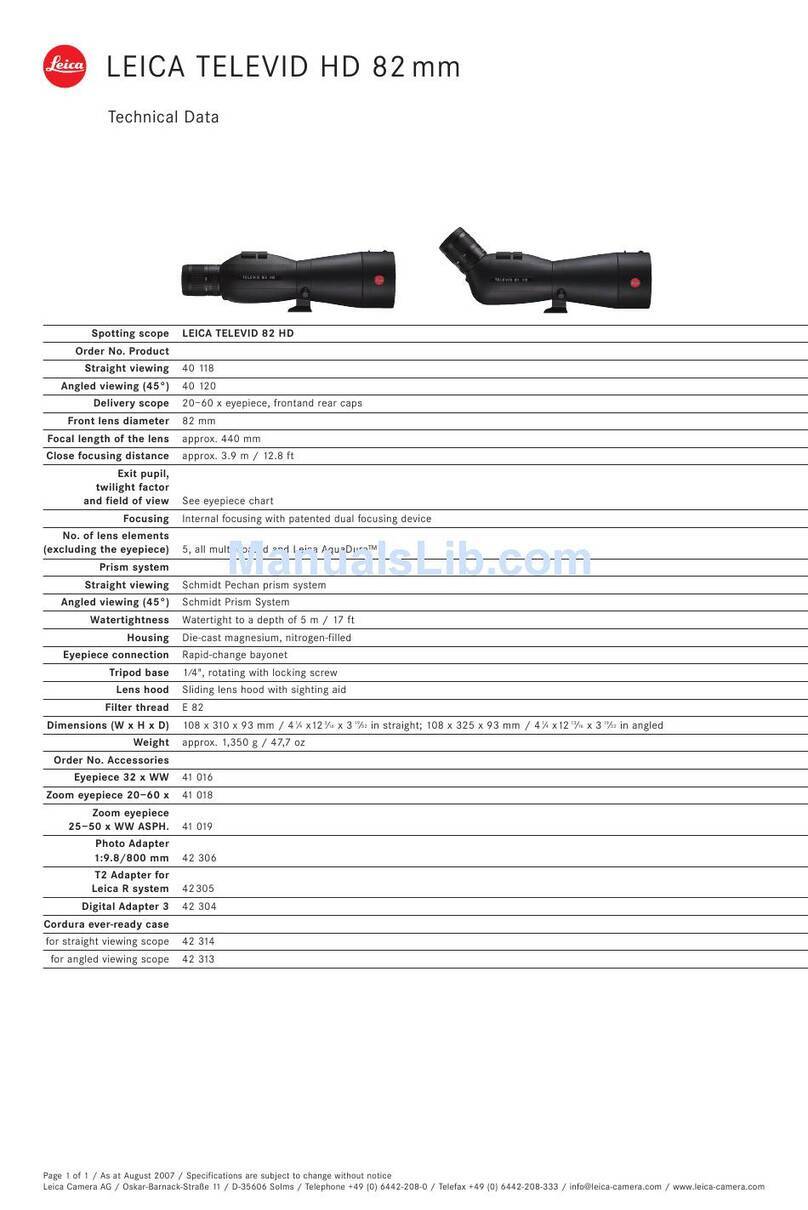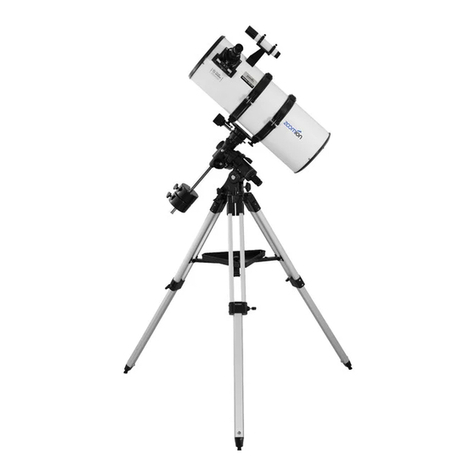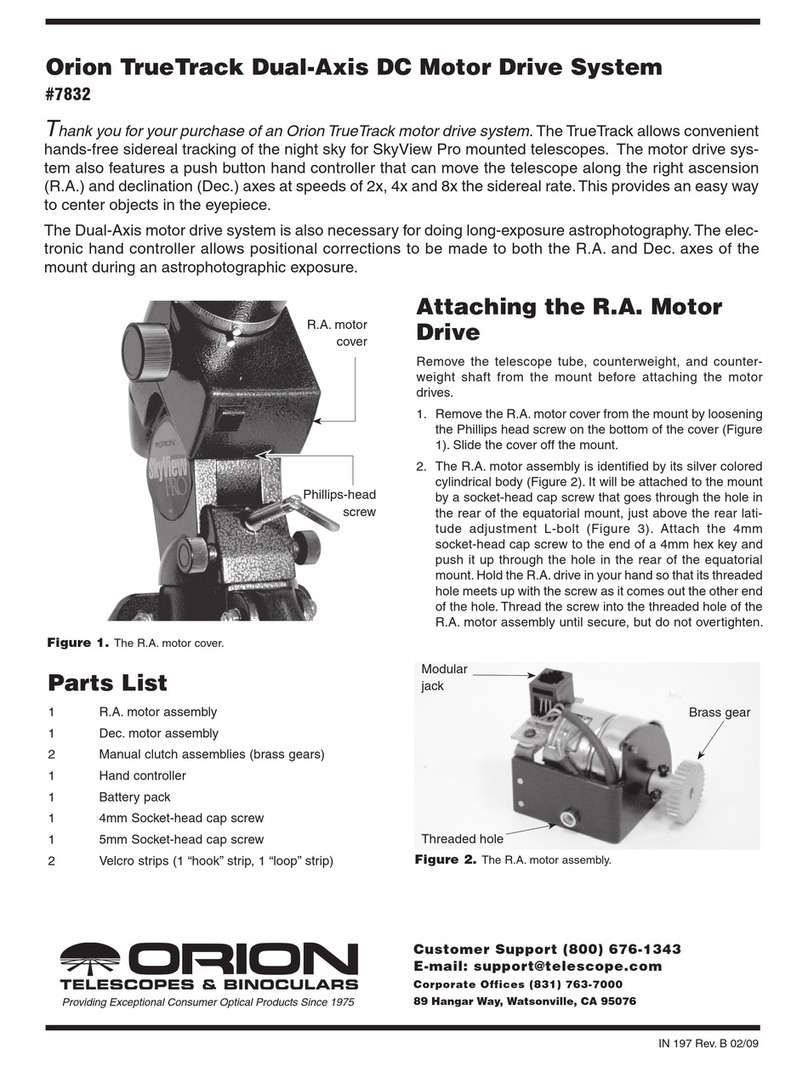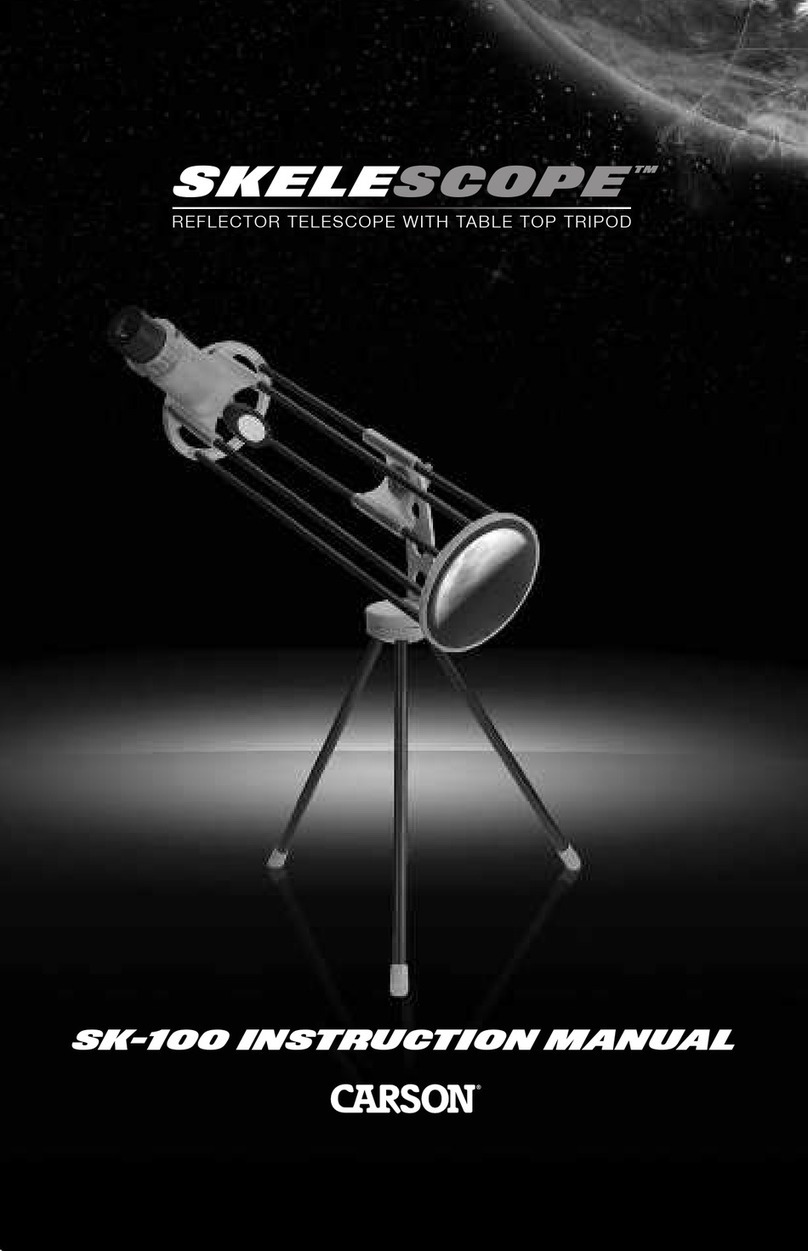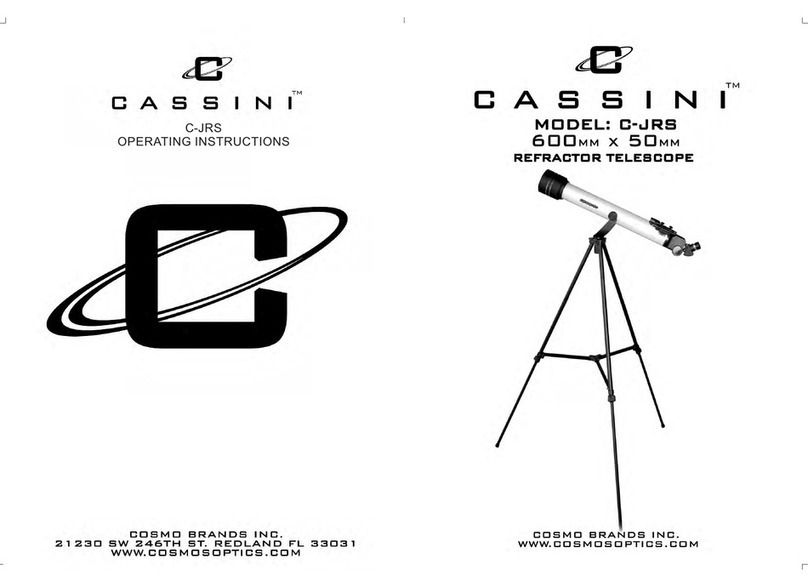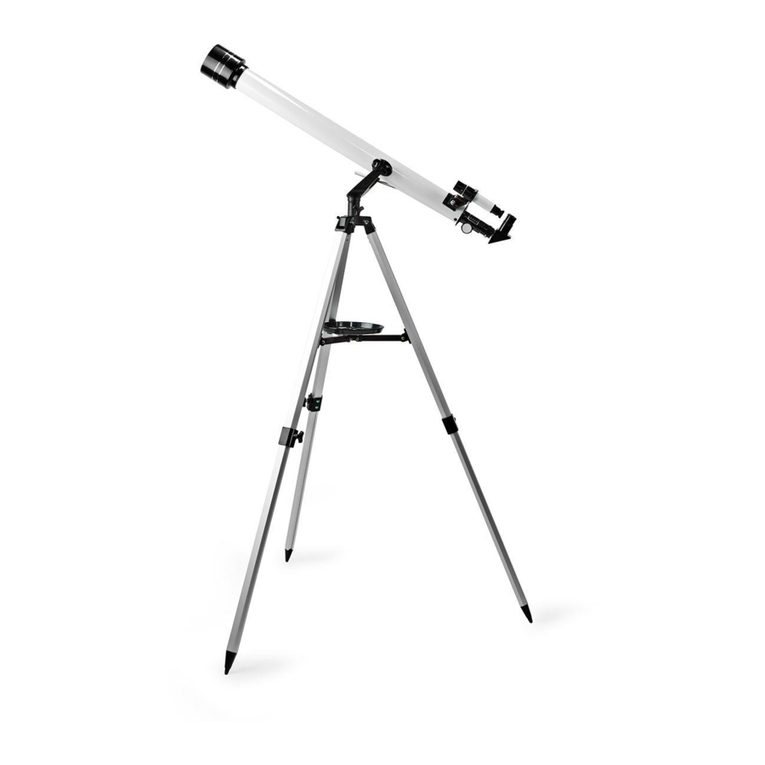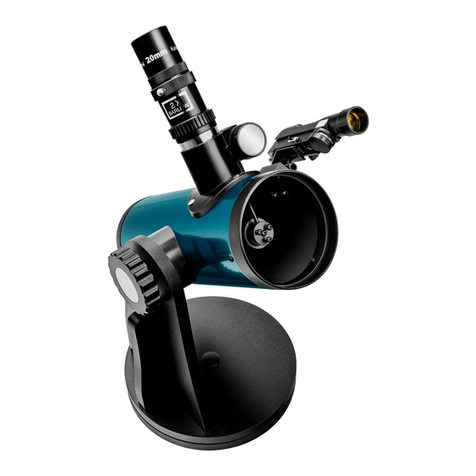
8
T
racking Celestial Objects
(for all models)
When observing through a telescope, astronomical objects appear to move slowly through the telescope's field
of view. When the mount is correctly polar aligned, you only need to turn the R.A. slow-motion to follow or track
objects as they move through the field. The DEC. slow-motion control is not needed for tracking. A R.A. motor
drive can be added to automatically track celestial objects by counteracting the rotation of the Earth.
The quickest way to find objects is to learn the Constellations
and use the Red Dot Finder, but if the object is too faint you
may want to use setting circles on your EQ1 mount. Setting
circles enable you to locate celestial objects whose celestial
co-ordinates have been determined from star charts.
Your telescope must be polar aligned and the R.A. setting
circle must be calibrated before using the setting circles. The
DEC. setting circle was set at the factory, and does not require
calibrating the same manner as the R.A.setting circle.
Reading the R.A. setting circle
The telescope's R.A. setting circle is scaled in hours, from 1
Pointer
R.A. Setting Circle
DEC. Setting Circle
0
1
23
23
1
2
22
3
21
4
20
5
19
6
18
7
17
8
169
15
10
14
Fig.j
U
sing the setting circles
(for all models)
through 24, with small lines in between representing 10 minute increments. The upper set of numbers apply to
viewing in the Northern Hemisphere, while the numbers below them apply to viewing in the Southern
Hemisphere (Fig.j).
Setting (calibrating) the R.A. Setting Circle
In order to set your Right Ascension circle you must first find a star in your field of view with known coordinates.
A good one would be the 0.0 magnitude star Vega in the Constellation Lyra. From a star chart we know the R.A.
coordinate of Vega is 18h 36m. Loosen the R.A. and DEC. lock knobs on the mount and adjust the telescope so
that Vega is centred in the field of view of the eyepiece.Tighten the R.A. and DEC. lock knobs to lock the mount
in place.Now rotate the R.A. setting circle until it reads 18h36m.Your are now ready to use the setting circles to
find objects in the sky.
Finding objects using the setting circles
Example: Finding the faint planetary nebula M57; "The Ring"
From a star chart, we know the coordinates of the Rings are Dec. 33º and R.A. 18h52m. Unlock the DEC lock
knob and rotate your telescope in DEC until the pointer on the DEC setting circle reads 33º. Re-tighten the
DEC lock knob. Loosen the R.A. lock knob and rotate the telescope in R.A. until the pointer on the R.A. setting
circle reads 18h52m (do not move the R.A. circle). Re-tighten the R.A. lock knob.Now look through the Red Dot
Finder to see if you have found M57. Adjust the telescope with R.A. and DEC. flexible cables until M57 is
allignment, look through the finderscope and center the
Polaris on the crosshairs.
Even though the true celestial pole may be up to twice
the moon's diameter away (Polaris circles the pole once
a day) you won't find this a problem unless you are
doing long exposure photography.
Southern Hemisphere
In the Southern Hemisphere you must align the mount
to the SCP by locating its position with star patterns,
without the convenience of a nearby bright star. The
closest star is the faint 5.5-mag. Sigma Octanis which is
about one degree away. Two sets of pointers which help
to locate the SCP are alpha and beta Crucis (in the
Southern Cross) and a pointer running at a right angle
to a line connecting alpha and beta Centauri (Fig.j).
omega
Octanis
alpha
Centauri beta
Centauri
alpha
Crucis
beta
Crucis
SCP +
Fig.j
